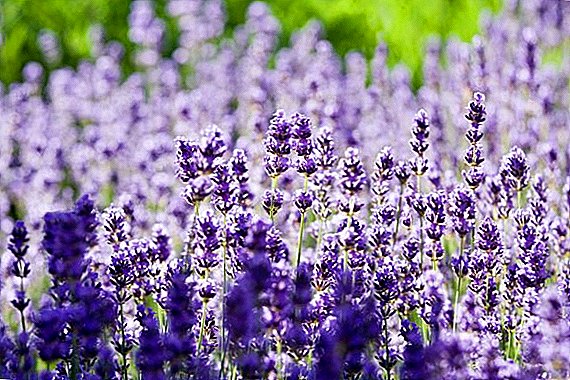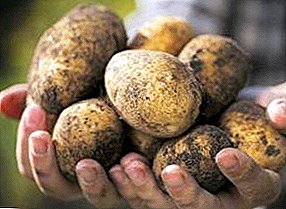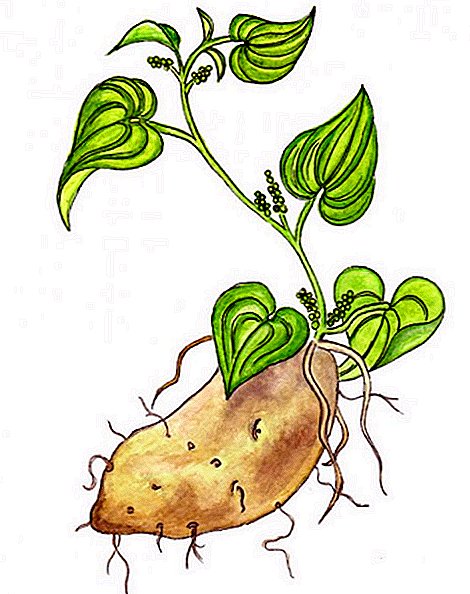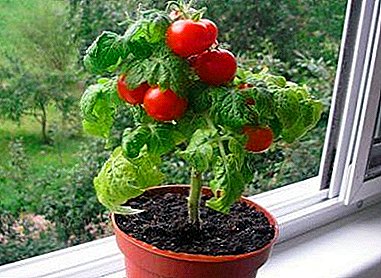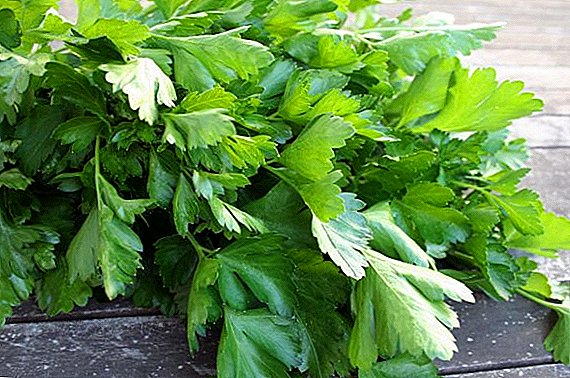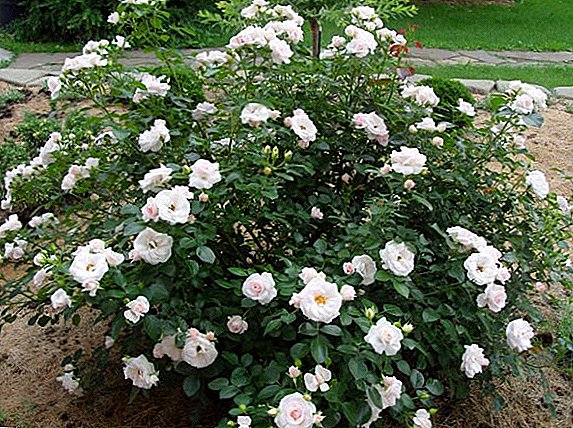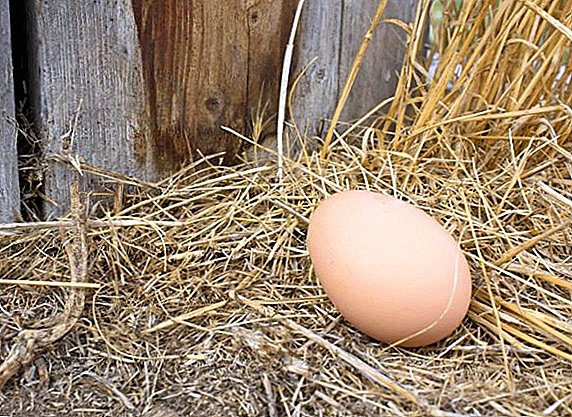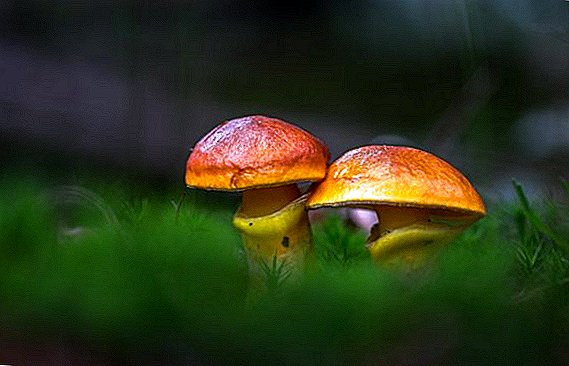 Asparagus is a genus of perennial plants belonging to the asparagus family. In addition to asparagus, used in food, there are many species related to ornamental plants. One of the brightest representatives is Asparagus Meier, which will be discussed in the article.
Asparagus is a genus of perennial plants belonging to the asparagus family. In addition to asparagus, used in food, there are many species related to ornamental plants. One of the brightest representatives is Asparagus Meier, which will be discussed in the article.
Plant description
Asparagus Meyer (Asparagus meyeri) refers to the form of Ethiopian asparagus and is a shrub with lowered shoots, the stems of which are densely covered with small leaves, needles and resemble the tail of a fluffy beast, for which the plant has received the nickname "foxtail". It reaches a height of 50 cm, it can grow to a width of up to 6 m. It blooms in summer with small yellow-white bells with a delicate aroma. In place of the faded flowers appear fruits in the form of spherical red berries with a diameter of 6-10 mm.
Did you know? Previously, the genus asparagus was ranked as a lily family, asparagus scientists attributed it in 2003.
Conditions for growing at home
For a decorative flower to be comfortable, it is necessary to create conditions close to natural for it.
Lighting
A well-lit room is suitable for a flower. It is necessary to choose a place for a flower that is light, but without direct sunlight, as the leaves turn yellow from their impact. If the plant is in a darkened corner, it is necessary to provide good lighting with fluorescent lights or phytolamps. 
Temperature
In spring and summer, the plant should be maintained at a temperature of + 22 ... + 25 ° C, it can also be carried out into the open air, hidden from the direct sun and drafts. In winter, the optimum temperature is + 14 ... + 15 ° С.
Air humidity
Important for asparagus Meier is high humidity. It can be provided by spraying a flower 2 times a week, as well as placing a pot with a plant in a tray filled with wet expanded clay or pebbles.
Check out the most common types of asparagus.
Home care
Proper watering, time fertilizers, pruning - the necessary components of flower care. 
Watering
Since spring, when asparagus is actively growing, it should be watered regularly and abundantly settled with water at room temperature. It is necessary to monitor the condition of the soil so that it is slightly moistened, but not to allow stagnant water. In winter, reduce the number of waterings. If the temperature in the room drops below + 14 ° C - stop so that the flower does not die.
Top dressing
It is necessary to feed asparagus Meier from mid-spring to the beginning of autumn 1 time in 2 weeks with mineral and organic fertilizers, such as “Mr. color station wagon” (1 cap per 1 liter of water), “Master agro” (1 tsp per 2 l water), crystal fertilizer "For decorative leafy plants" (0.2 g per 2 liters of water).
Learn how to properly care for asparagus at home.
Pruning
For asparagus Meier, superficial pruning is undesirable because it does not increase the number of branches. The most suitable procedure is the removal of old and sprinkled shoots at the base. Thanks to this new branches will appear. 
Transfer
Asparagus Meier transplantation is recommended in this way:
- each year in the spring to plant in capacity more previous;
- Before removing the flower from the old tank, it must be watered well;
- carefully examine the root, if necessary, remove dried or damaged areas;
- tubers formed in the roots do not need to be removed, because they contain nutrients and if they are removed, the flower can become ill for a long time;
- place the plant in a pot, straighten the root and sprinkle it on top of the ground;
- water, fertilize in 2 weeks.
Important! If the temperature in the room where Meyer's asparagus is located drops below + 10 ° C, the plant may die..
Reproduction of asparagus
Reproduction of asparagus Meier does not require much effort and is carried out in several ways: using cuttings, from seeds, dividing an adult bush.
Cuttings
It is considered the most difficult method of reproduction.  It is as follows:
It is as follows:
- cuttings 10–15 cm long must be prepared in early spring by treating with a growth stimulator;
- plant cuttings in containers filled with a mixture of perlite peat and wet sand;
- top cover with clear glass or film;
- make sure that the sand does not dry out, regularly sprinkling it from the spray gun;
- periodically open for ventilation;
- After 4-6 weeks, the cuttings will take root, and you can plant in separate pots.
Seeds
Seeds can be sown in late February - early March.
Did you know? Translated from the Greek word asparagus means "young growth".
For this you need:
- soak seeds in a weak solution of potassium permanganate for disinfection;
- sow in the prepared soil at a distance of 3 cm from each other;
- from above moisten with a spray;
- cover with tinted glass and put on the window sill;
- check the condition and humidity of the earth, to air;
- after a month the seeds will germinate, and when the shoots reach a height of 10 cm, transplant into separate containers.

Division
The breeding method is as follows:
- the root of an adult bush should be carefully divided into several parts without damaging it;
- shake off the previously formed new bushes from the previous soil and plant them in separate pots filled with ready-made soil;
- containers should be placed in a shade with a temperature not higher than + 15 ° С;
- water regularly and fertilize after 2 weeks;
- when the seedlings take root, you can transfer them to a permanent location.
Possible diseases and pests, and how to deal with them
Pests and diseases that plague Meyer's asparagus:
- spider mite - settles on the leaves of the plant in the form of a thin web and sucks the juice out of it. Since the flower does not tolerate the treatment with chemicals, it is recommended to rinse it under strong pressure of warm water (+ 40 ° C) during infection, then spray it with Actellic (2 ml per 1 l of water);
- shield - an insect that eats the sap of a flower. You can fight it by spraying with a solution of laundry soap, holding a shower, as well as treatment with the drug "Actellic";
- thrips - cause bleaching of the plant, which ceases to grow. It is necessary to adjust the temperature and humidity of the air, spray it with “Actellic” or “Decis” (0.1 g per 1 l of water);
- yellowing and leaf fall- result from improper care. To eliminate these signs, it is necessary to normalize the growing conditions of the bush.
Important! Dusted leaves must be cleaned with a damp cloth as they may cause allergies.
Asparagus Meier, having a beautiful appearance, unpretentiousness to growing and caring for him, is used not only as a houseplant, but also serves as an original complement to floral arrangements and in interior landscaping.


